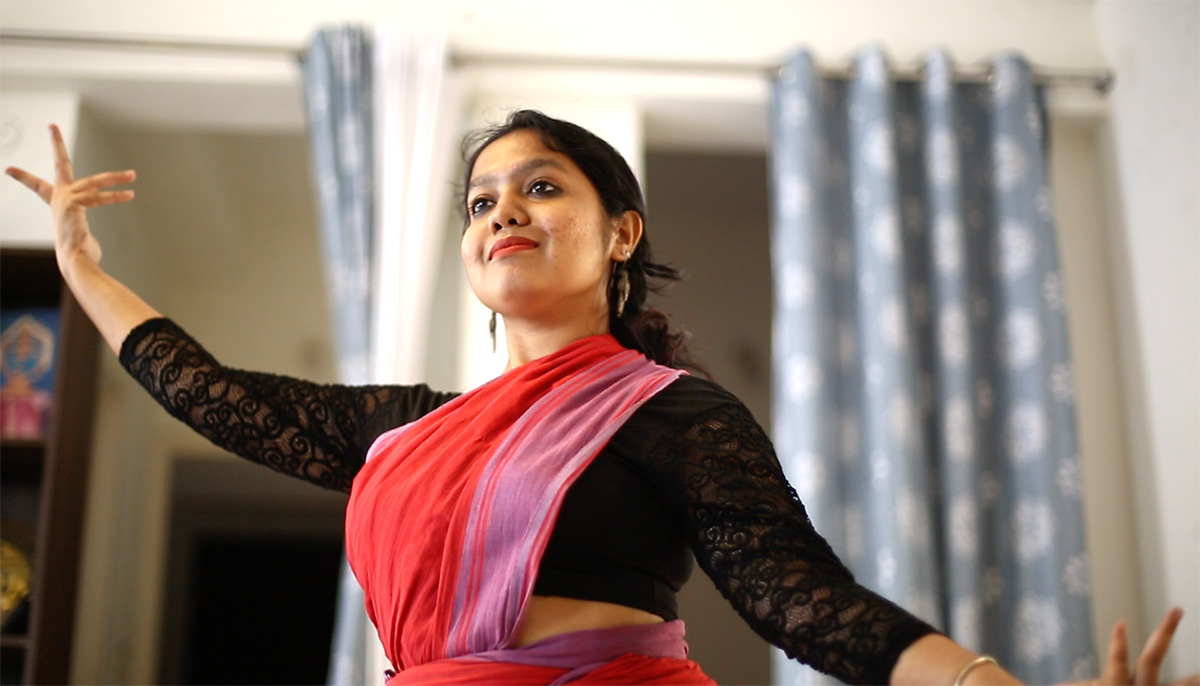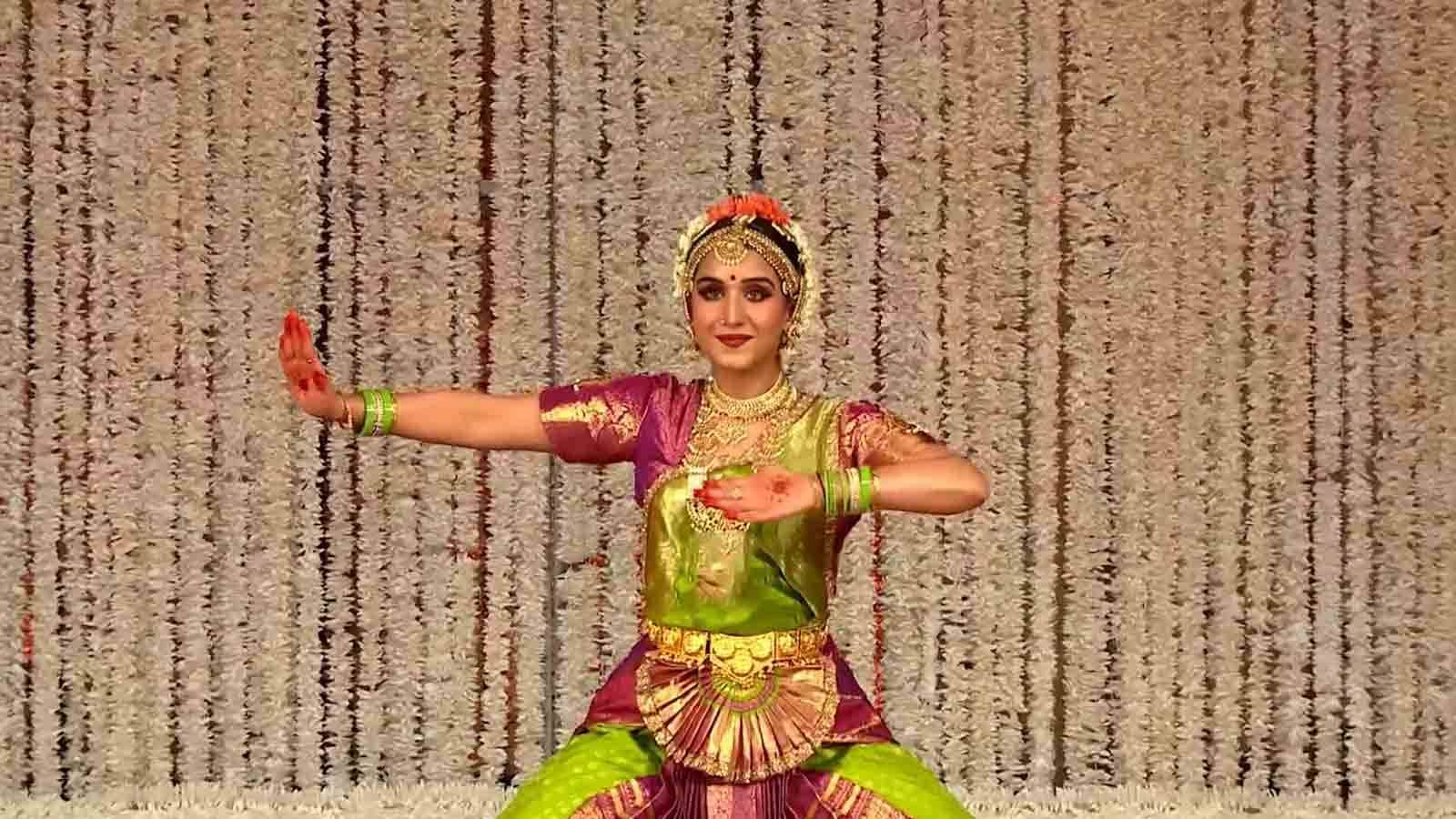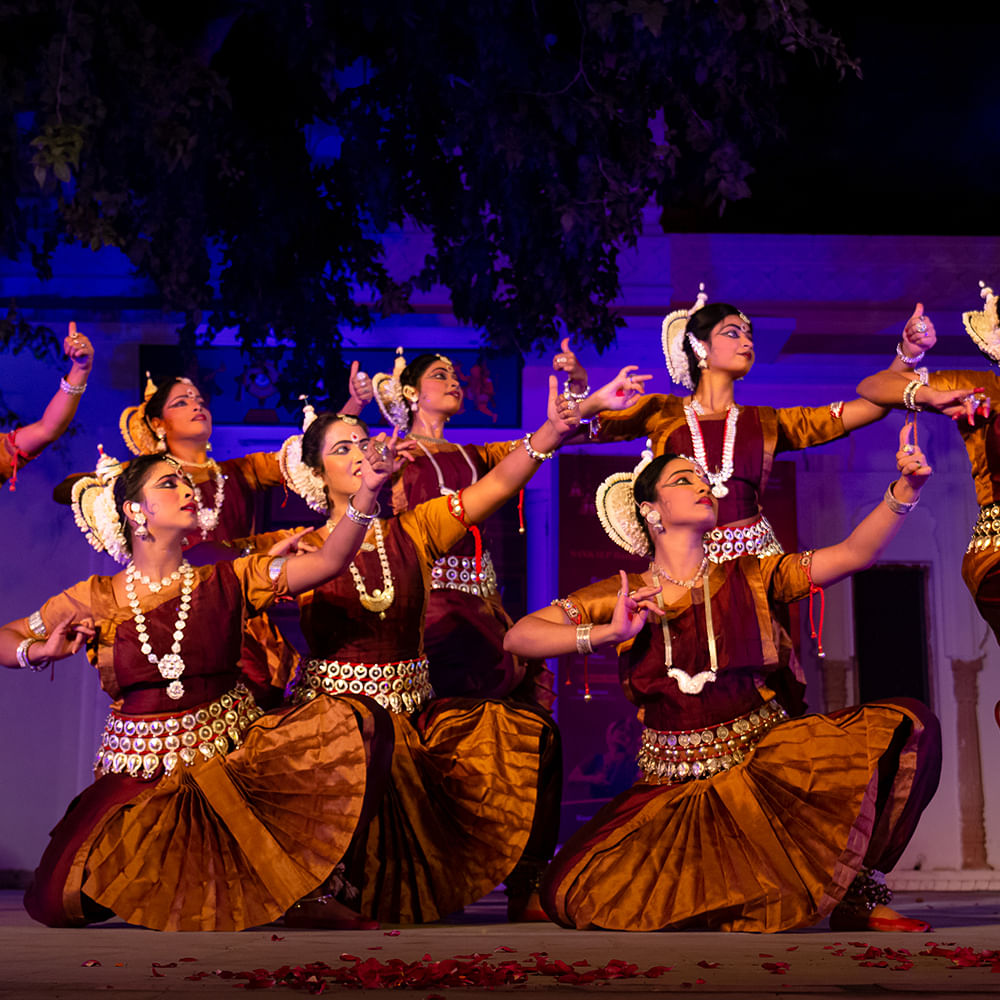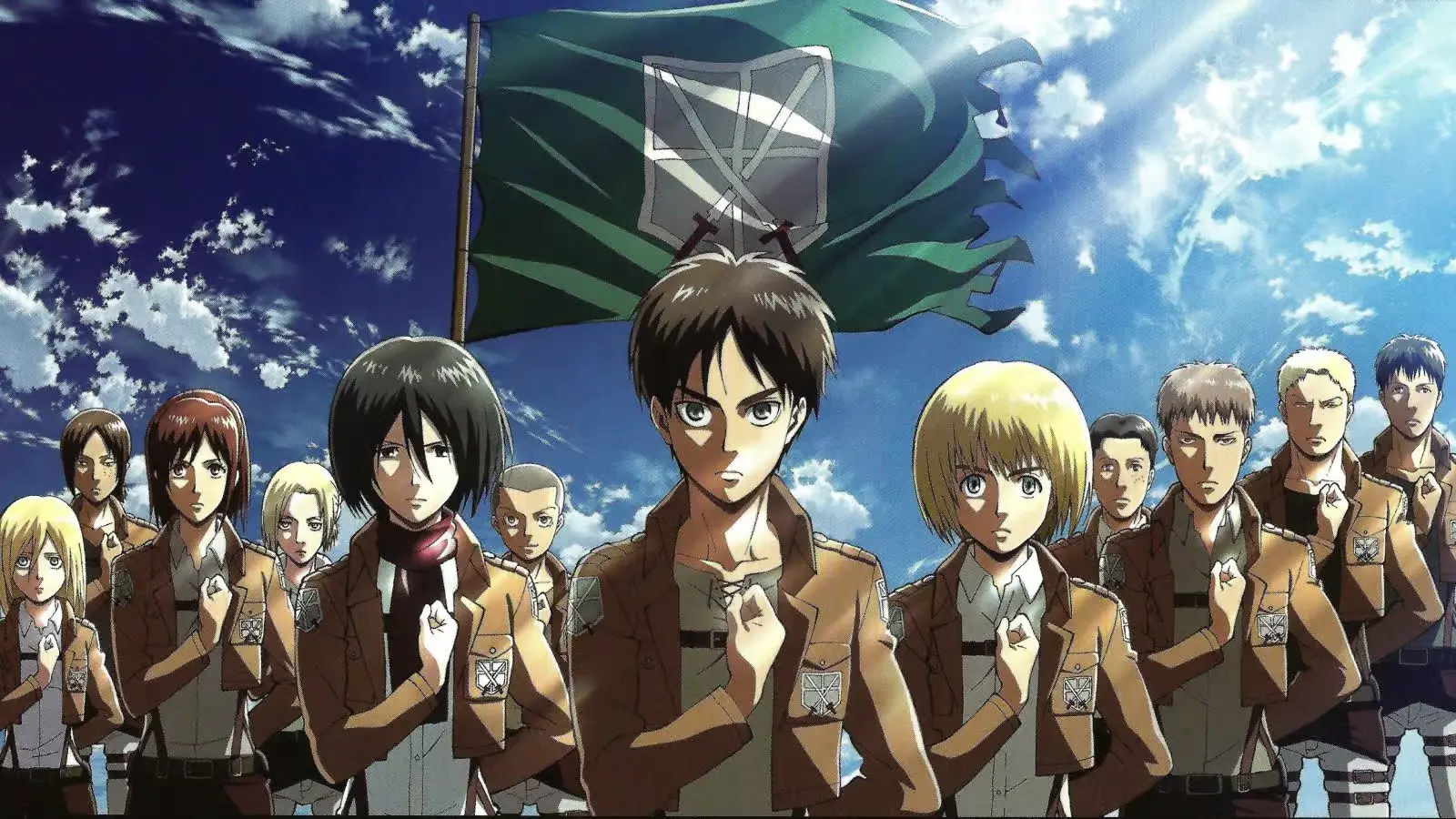Bharatanatyam, the classical dance form originating from the state of Tamil Nadu, emanates an exquisite charm and timeless elegance. With its roots traced back to the ancient temples of South India, Bharatanatyam has evolved into a revered art form that embodies grace, storytelling, and precise rhythmic movements.
Every Bharatanatyam performance is a mesmerizing spectacle, where dancers effortlessly depict mythical tales and religious narratives through their intricate gestures, facial expressions, and synchronized footwork. The dancers, adorned in vibrant costumes and intricate jewelry, transport audiences to a world of myth and legend.
The essence of Bharatanatyam lies in its ability to communicate emotions and convey stories without the use of words. Each movement, each subtlety, and each expression expertly convey a myriad of emotions, capturing the attention and imagination of the spectators.
Furthermore, Bharatanatyam is not just a dance form but a way of life, with dedicated practitioners upholding this cherished tradition and passing it down through generations. It is a timeless art form that continues to inspire and enthrall audiences worldwide with its beauty and expressiveness. Discover the enchantment of oppatoto Bharatanatyam and immerse yourself in a captivating journey through the cultural heritage of Tamil Nadu.

History and Origins of Bharatanatyam
The origins of Bharatanatyam can be traced back over 2,000 years to the temples of Tamil Nadu, where it was performed by Devadasis, women dedicated to temple service. These dancers played a crucial role in religious rituals, presenting divine stories through their art. The dance was initially known as ‘Sadir,’ a term that referred to both the dance and the dancers. As time progressed, Sadir evolved into what we now recognize as Bharatanatyam, gaining prominence not only as a spiritual practice but also as a celebrated performance art.
In the 19th century, Bharatanatyam underwent significant transformations, particularly during the reign of the Maratha kings of Tanjore. The royal patronage led to the formalization of the dance’s codified movements and expressions, which were meticulously documented by the legendary dancer and choreographer, Rukmini Devi Arundale. Her efforts to revive and reform Bharatanatyam during the early 20th century were instrumental in elevating it from a temple art to a respected stage performance. This renaissance introduced Natya Kala to a broader audience, allowing it to flourish beyond its traditional roots.
The transition of Bharatanatyam from temples to theaters marked a pivotal moment in its history. With the establishment of dance schools and institutions, several talented dancers emerged, each contributing their unique interpretations and styles. This period not only preserved the traditional aspects of Natya Kala but also infused them with contemporary relevance, ensuring that the dance form remained dynamic and adaptable through the ages.
The Significance of Bharatanatyam in Tamil Nadu Culture
Bharatanatyam is woven intricately into the cultural fabric of Tamil Nadu, serving as a medium of spiritual expression and artistic representation. It holds a sacred place in the hearts of the Tamil people, symbolizing a rich heritage that transcends time and geography. The dance form reflects the values, traditions, and beliefs of a society that has revered the arts for centuries.
Beyond its aesthetic appeal, Bharatanatyam is also a vehicle for storytelling, conveying both mythological and historical narratives. Each performance is a vibrant tapestry of emotions, where dancers embody characters from ancient epics like the Ramayana and Mahabharata, bringing these tales to life through their movements and expressions. This narrative aspect of Natya Kala fosters a deep connection between the audience and the performers, creating a shared experience that resonates with people of all ages.
Moreover, Bharatanatyam plays a crucial role in community bonding and cultural preservation. Festivals and celebrations often feature Natya Kala performances, serving as a means of bringing people together to celebrate their shared heritage. These gatherings not only promote the art form but also instill a sense of pride and identity among the Tamil people, ensuring that Bharatanatyam remains a vibrant aspect of Tamil Nadu’s cultural landscape.
Key Elements and Techniques of Bharatanatyam
Bharatanatyam is characterized by its intricate footwork, expressive hand gestures (mudras), and facial expressions (abhinaya), which together create a captivating visual experience. The dance is divided into several components, including Alarippu, Jatiswaram, Varnam, and Tillana, each serving a distinct purpose in a performance. Alarippu is an invocatory piece that focuses on rhythm and movement, while Jatiswaram emphasizes intricate foot patterns combined with melodic phrases.
The centerpiece of Bharatanatyam is the Varnam, a long and elaborate composition that showcases the dancer’s skill in both expression and technique. This segment is often the most dramatic, as it tells a story through a combination of narrative and pure dance. The performance culminates in the Tillana, a lively and rhythmic finale that celebrates the joy of dance, often featuring swift footwork and intricate hand movements.
Each of these components requires rigorous training and practice, as precision is paramount in Bharatanatyam. Dancers undergo years of intensive instruction to master the various techniques and to internalize the emotions that each movement conveys. The result is a performance that is not only technically proficient but also rich in emotional depth, leaving audiences spellbound by the dancer’s ability to transport them into the world of storytelling and artistry.
Traditional Costumes and Accessories in Bharatanatyam
The visual splendor of Bharatanatyam is further enhanced by the traditional costumes worn by the dancers. Typically, female dancers don a silk saree, which is intricately pleated and draped to facilitate graceful movements. The saree is often adorned with vibrant colors, reflecting the dancer’s expression and the mood of the performance. The saree is complemented by a blouse that fits snugly, allowing for ease of movement, and is often embellished with decorative embroidery or embellishments.
Male dancers, on the other hand, traditionally wear a dhoti paired with a silk or cotton kurta. The dhoti allows for unrestricted movement and is often tied in a way that echoes the fluidity and grace of the dance. Both male and female dancers adorn themselves with an array of accessories, including elaborate jewelry made from gold or imitation materials, which adds to the visual richness of the performance.
The use of specific accessories also plays a significant role in Bharatanatyam. Dancers wear anklets (ghungroos) that produce rhythmic sounds, enhancing the auditory experience of the dance. Furthermore, traditional hair adornments, such as the gajra (flower garland), and ornate hairpieces are used to accentuate the dancer’s appearance, contributing to the overall aesthetic of Bharatanatyam. This careful attention to detail in costumes and accessories not only enhances the visual appeal but also reflects the cultural significance of Natya Kala as an art form steeped in tradition.

Popular Bharatanatyam Compositions and Dance Styles
Bharatanatyam encompasses a diverse repertoire of compositions that span various themes and emotions. Among the most popular compositions is the “Bhavayami Gopalabeem,” which narrates the childhood exploits of Lord Krishna. This piece is often characterized by its playful and joyous expressions, allowing dancers to showcase their ability to embody different characters.
Another notable composition is the “Moksha,” which represents the final liberation of the soul. This piece is typically performed towards the end of a Natya Kala recital and emphasizes the dancer’s connection to spirituality. The movements in Moksha are fluid and graceful, symbolizing the dancer’s transcendence into a realm beyond the physical world.
In addition to these compositions, various dance styles within Natya Kala have emerged over the years, each with its unique characteristics. The Kalakshetra style, developed by Rukmini Devi Arundale, emphasizes a more classical and aesthetic approach, while the Tanjore style is known for its intricate footwork and rapid movements. These diverse styles contribute to the richness of Bharatanatyam, allowing it to evolve while preserving its core essence.
Famous Bharatanatyam Dancers and Their Contributions
Throughout history, numerous dancers have made significant contributions to the evolution and popularization of Bharatanatyam. One of the most celebrated figures is Rukmini Devi Arundale, who played a pivotal role in reviving Natya Kala during the 20th century. Her efforts to reform the dance, emphasizing its artistic integrity and spiritual significance, helped elevate Bharatanatyam to a respected position within the global arts community.
Another influential dancer is Balasaraswati, known for her emotive expressions and mastery of abhinaya. Her performances captivated audiences and set new standards for Bharatanatyam. Balasaraswati’s dedication to preserving traditional techniques while infusing her unique interpretations has influenced generations of dancers.
In contemporary times, dancers like Alarmel Valli and Shobana have gained international acclaim for their innovative approaches to Bharatanatyam. They have successfully blended traditional elements with contemporary themes, making the dance form relevant to modern audiences. Their contributions have not only enriched Natya Kala but have also opened doors for collaboration across various art forms, showcasing the adaptability and timelessness of this exquisite dance.
Bharatanatyam Festivals and Competitions in Tamil Nadu
The vibrant culture of Tamil Nadu is celebrated through numerous festivals that feature Natya Kala performances. One of the most prominent events is the Natyanjali Dance Festival, held annually in Chidambaram, which celebrates the art of dance at the sacred Nataraja temple. This festival attracts dancers from all over India and provides an excellent platform for both established and emerging talents to showcase their skills.
Another noteworthy event is the Margazhi Mahotsavam, a month-long festival in Chennai that features a plethora of classical dance performances, including Bharatanatyam. This festival not only promotes the art form but also fosters a sense of community among artists and audiences, creating an atmosphere of celebration and appreciation for classical arts.
Competitions also play a crucial role in the Natya Kala landscape, encouraging dancers to hone their skills and push their creative boundaries. Various institutions and organizations host competitions that attract participants from different regions, allowing dancers to showcase their talent and gain recognition. These events contribute to the continued growth and evolution of Bharatanatyam, ensuring that it remains a vibrant and dynamic art form.
The Role of Bharatanatyam in Contemporary Society
In contemporary society, Natya Kala serves as a powerful medium for cultural expression and identity. As globalization increases, there is a renewed interest in traditional art forms, with Bharatanatyam at the forefront of this cultural renaissance. Many young dancers are embracing Bharatanatyam, not only as a form of artistic expression but also as a way to connect with their cultural roots.
Natya Kala has also evolved to address contemporary themes, incorporating social issues and modern narratives into performances. This adaptability allows the dance form to resonate with diverse audiences, bridging the gap between traditional and modern art. Through innovative choreography and contemporary interpretations, Natya Kala continues to captivate and inspire, demonstrating its relevance in today’s world.
Moreover, Bharatanatyam has transcended geographical boundaries, with enthusiasts and practitioners emerging globally. Dance schools and workshops dedicated to Natya Kala have sprung up in various countries, promoting cross-cultural exchange and appreciation for this classical art form. This global outreach has not only enriched the dance community but has also positioned Bharatanatyam as a symbol of cultural pride and heritage, celebrated by people from diverse backgrounds.

Conclusion: Preserving and Promoting Bharatanatyam
As we delve into the world of Bharatanatyam, it becomes evident that this classical dance form is more than just an art; it is a living testament to the rich cultural heritage of Tamil Nadu. The dedication of dancers, teachers, and enthusiasts plays a crucial role in preserving and promoting Natya Kala for future generations.
Efforts to document and record the intricacies of Bharatanatyam, along with the establishment of institutions and dance schools, ensure that its legacy is maintained. Encouraging the younger generation to engage with Bharatanatyam through classes, workshops, and performances is vital for its continued evolution and survival. If you like reading this article, then please consider visiting dansartain to find more article like this.




